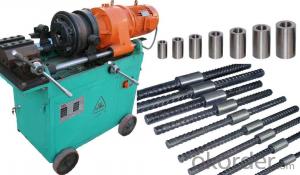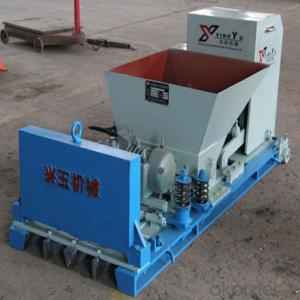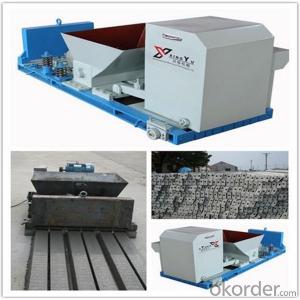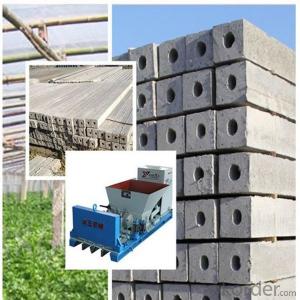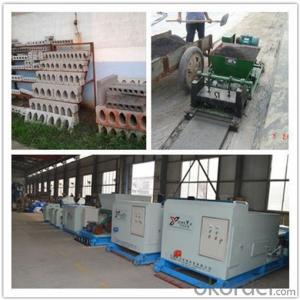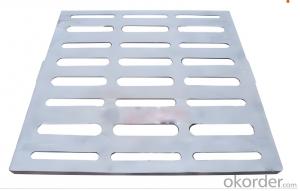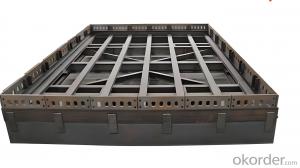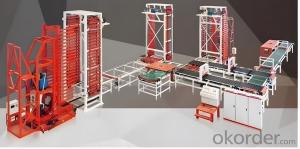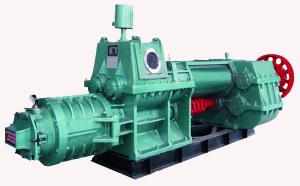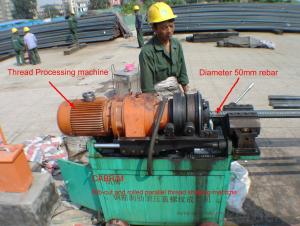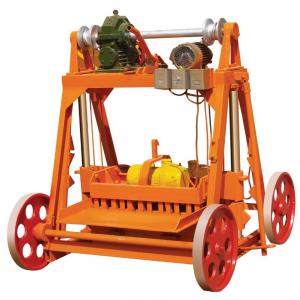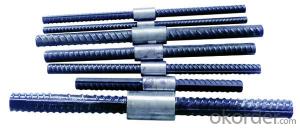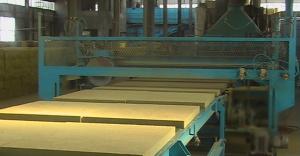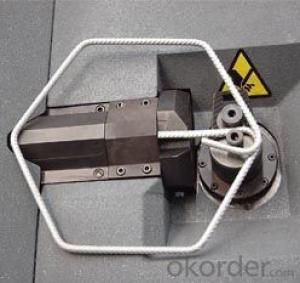Cutting and Transporting Equipment---Operating Equipment---Tractor
- Loading Port:
- China main port
- Payment Terms:
- TT OR LC
- Min Order Qty:
- 1 unit
- Supply Capability:
- 50 unit/month
OKorder Service Pledge
OKorder Financial Service
You Might Also Like
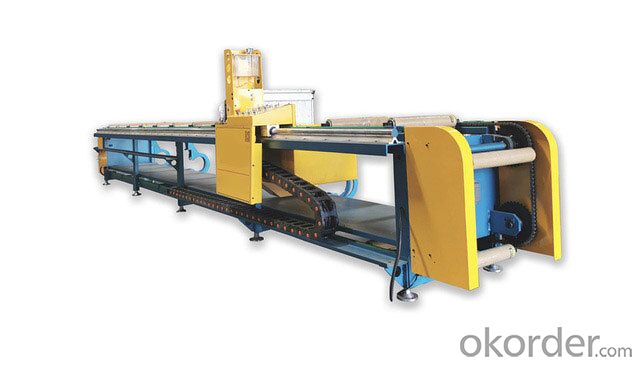
Tractor
Specifications | Traction Speed(m/s) | Largest Traction(t) | Motor Power(kw) | Wire Rope | Traction Trolley with Track | Applicable Kiln Type |
ZWQY-K3 | 0.08-0.2 | 3.0 | 3 | Φ10 Φ14 6×19 | Channel steel 12 Outer edge of rail width 560 | 3.6m |
ZWQY-K4 | 0.08-0.2 | 4.0 | 4 | Φ10 Φ14 6×19 | Channel steel 12 Outer edge of rail width 580 | 4.8m |
ZWQY-K5 | 0.08-0.2 | 4.5 | 5.5 | Φ10 Φ14 6×19 | Channel steel 12 Outer edge of rail width 800 | 4.8m above |
ZWQY-K7 | 0.08-0.2 | 5.5 | 7.5 | Φ10 Φ14 6×19 | Channel steel 12 Outer edge of rail width 800 | 4.8m above |
Added: Hydraulic beat stepper
A tractor is an engineering vehicle specifically designed to deliver a high tractive effort (or torque) at slow speeds, for the purposes of hauling a trailer or machinery such as that used in agriculture, mining, or construction. Most commonly, the term is used to describe a farm vehicle that provides the power and traction to mechanize agricultural tasks, especially (and originally) tillage, and now many more. Agricultural implements may be towed behind or mounted on the tractor, and the tractor may also provide a source of power if the implement is mechanized.
An electric motor used to drive one or several moving axles on a locomotive or motor vehicle. There are many types of traction motors, such as DC traction motors, AC asynchronous traction motors, and AC synchronous traction motors. DC traction motors, especially DC series-excited motors, have good speed regulation performance and working characteristics, and are widely used to meet the needs of locomotive traction characteristics. The working principle of the traction motor is the same as that of the general DC motor, but it has special working conditions: the space size is limited by the gauge and the diameter of the moving wheel; when the locomotive runs through the rail gap and the switch, it must bear considerable shock and vibration; the large and small gears When the meshing is poor, strong torsional vibration will be generated on the armature; when used in harsh environments, rain, snow, and sand are easily intruded. Therefore, traction motors also have many requirements in terms of design and structure. For example, to make full use of the internal space of the body to make the structure compact, higher-level insulating materials and magnetic conductive materials should be used, and parts and components should have higher mechanical strength and rigidity. Good ventilation and heat dissipation conditions and dust and moisture resistance are required, and special measures must be taken to cope with the difficult "reversing" conditions to reduce sparks under the carbon brushes.
- Q: A. physicalB. intangibleC. tangibleD. transient
- i guess c
- Q: I forgot :DI think it's some sort of generator - I know there is some piece of equipment or machinery that converts the energy in power plants...Thanks in advance!!
- I don't have health insurance, I'm gonna get fined out the *** for it too. Health insurance doesn't heal anyhow, not a good comparison.
- Q: Metal forming and processing methods which have their own characteristics and scope of application
- Casting the advantages are: First, you can produce complex shapes, especially the complex cavity of the rough, such as the box; Second, a wide range of applications, casting the size of unrestricted; Third, you can use low scrap as raw materials, Low; four is the shape and size of the casting and the required parts are very close, can save a lot of metal materials. Casting the shortcomings are as follows: First, the process is relatively difficult to control, easy to produce defects; Second, compared to forgings, casting performance is relatively low; Third, in some casting process, the production of small quantities, workers labor intensity.
- Q: I hate working out in public gyms and exorcise rooms if other people are there for some reason. And I hate running in public (I've ran at night before, but now I don't have any time with so much schoolwork). I was wondering what some good exorcises i can do at home every day that don't take long but will make a difference. I was hoping to work my stomach muscles more so i can get in shape for swimsuit season. Thanks! (:
- brisk okorder
- Q: Details of Plant Machinery for Essential oil from medicines?
- Here okorder /
- Q: A. Counter revolutionB. DirectoryC.RevancheD.Thermidorean reaction
- The okorder /
- Q: plz help! its my homework :P ugh. thanks guys xD
- The Oxford American Writer's Thesaurus does not mention any antonyms. The opposite of a machine might be human labor. Did you mean synonym? (meaning similar) ... If so, apparatus ,hardware, gear, mechanism, gadgetry, tool, engine
- Q: Needing to know if you have elevator equipment in the back part of an office downstairs in the basement, is there anything put out by this equipment that can cause sickness?
- It's unlikely. There's more than one type of elevator, but I don't believe any of them use poisonous gas or asbestos.
- Q: machinery purchsed entry and derpeciation charged for it?
- The purchase: Dr. Machinery (Fixed Assets) Cr. Cash / Accounts Payable Depreciation: Dr. Machinery Depreciation Expense Cr. Machinery Accumulated Depreciation Note that the accumulated depreciation is a contra account for the fixed assets, and what appears on the Balance sheet is the net of the two figures.
- Q: Women: Do you like to operate machinery? Weedeaters? Lawnmowers? Tillers? Tractors? Etc?
- Where I'm at, alot of women seem to like to mow and weed their own land. Where I am from, we usually hire people for that sort of thing. Anyway, that's a nooooo from me. I let my husband do it.
Send your message to us
Cutting and Transporting Equipment---Operating Equipment---Tractor
- Loading Port:
- China main port
- Payment Terms:
- TT OR LC
- Min Order Qty:
- 1 unit
- Supply Capability:
- 50 unit/month
OKorder Service Pledge
OKorder Financial Service
Similar products
Hot products
Hot Searches
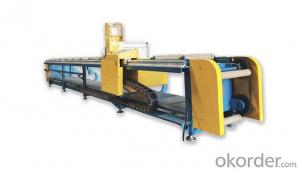
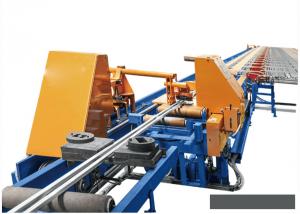



 Xi'an Research and Design Institute of Wall & Roof Materials Co,.Ltd.
Xi'an Research and Design Institute of Wall & Roof Materials Co,.Ltd.
